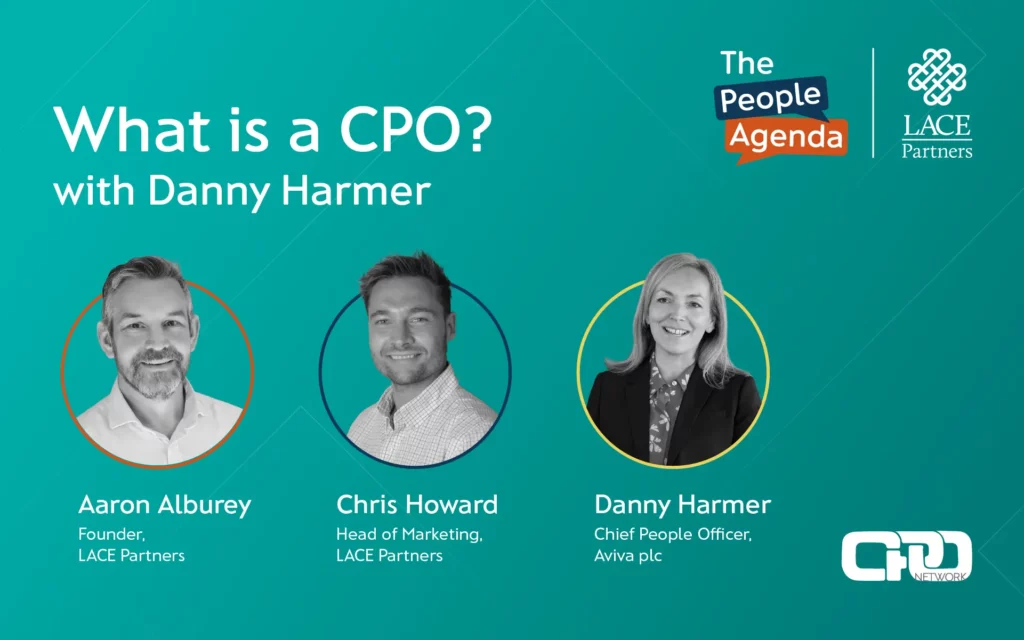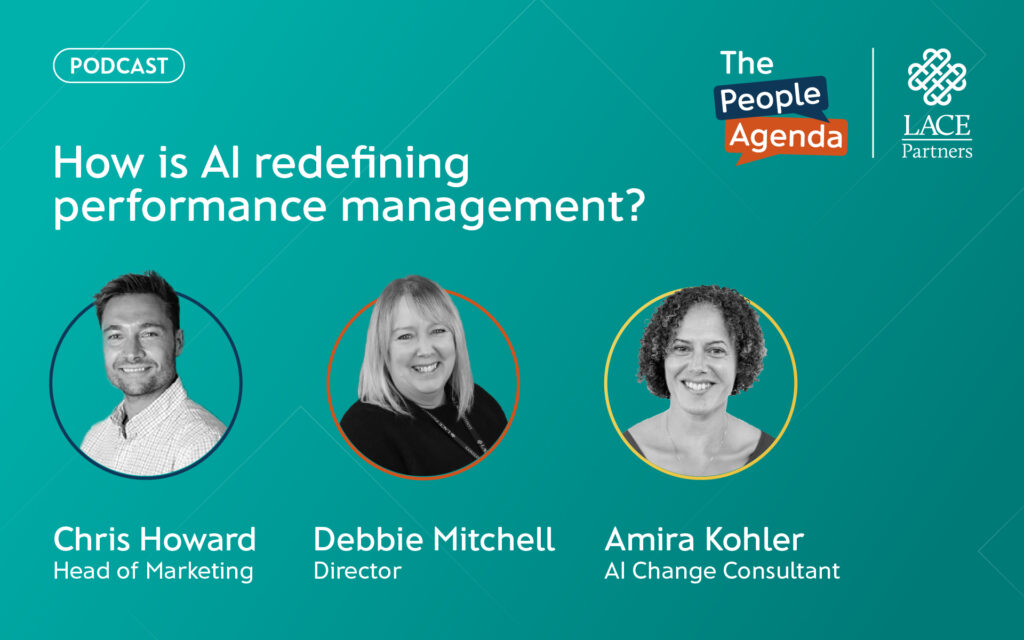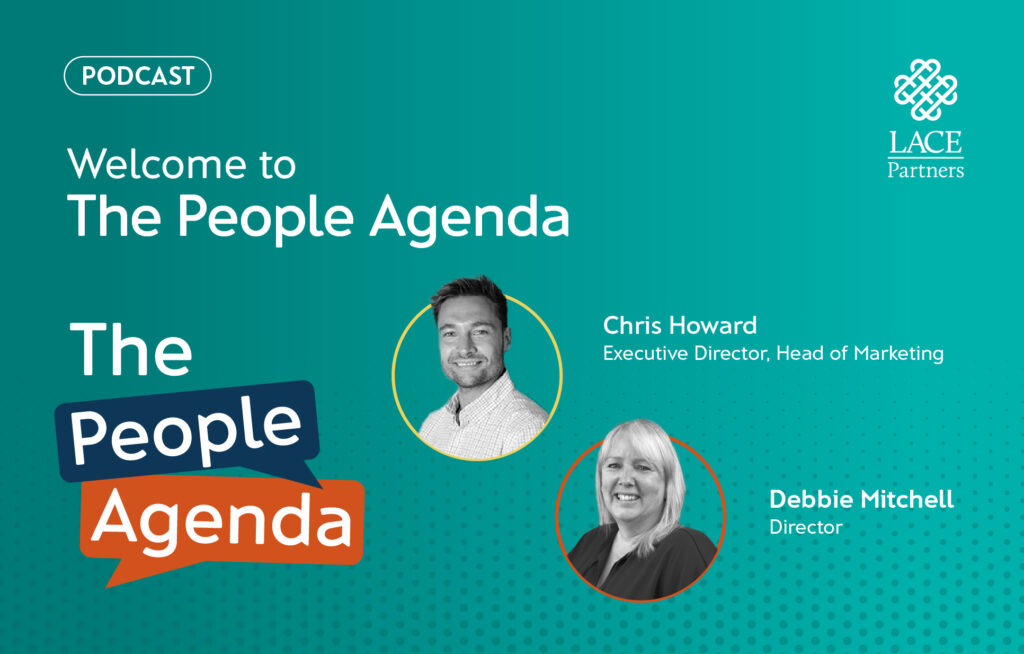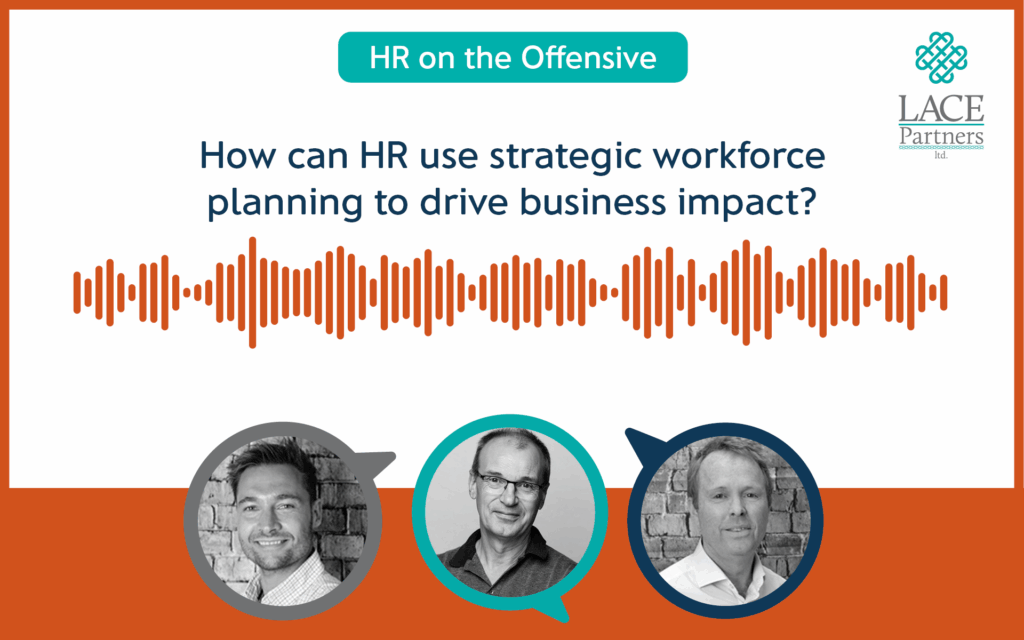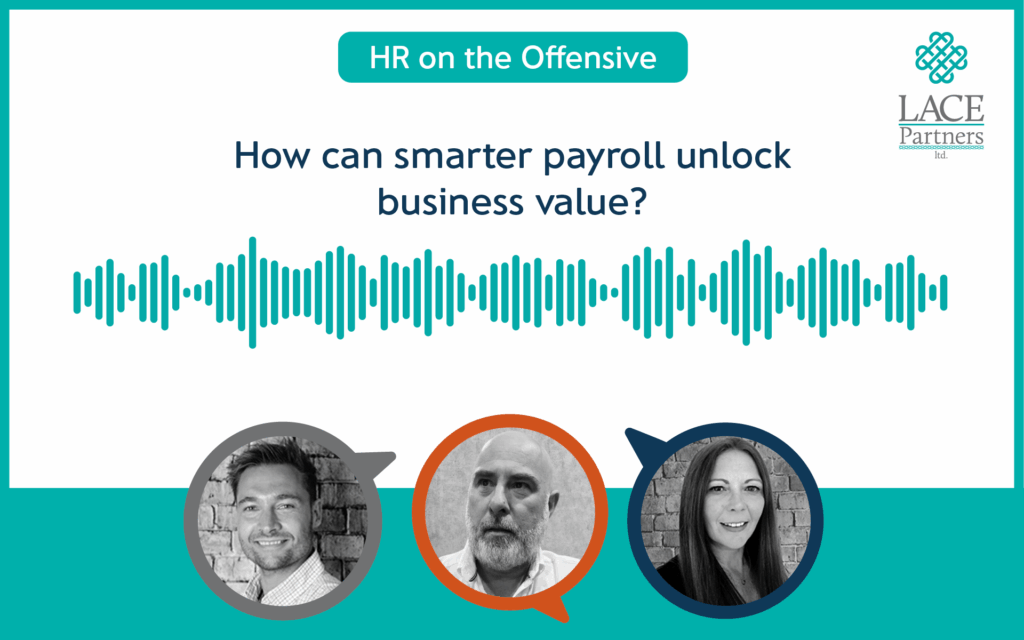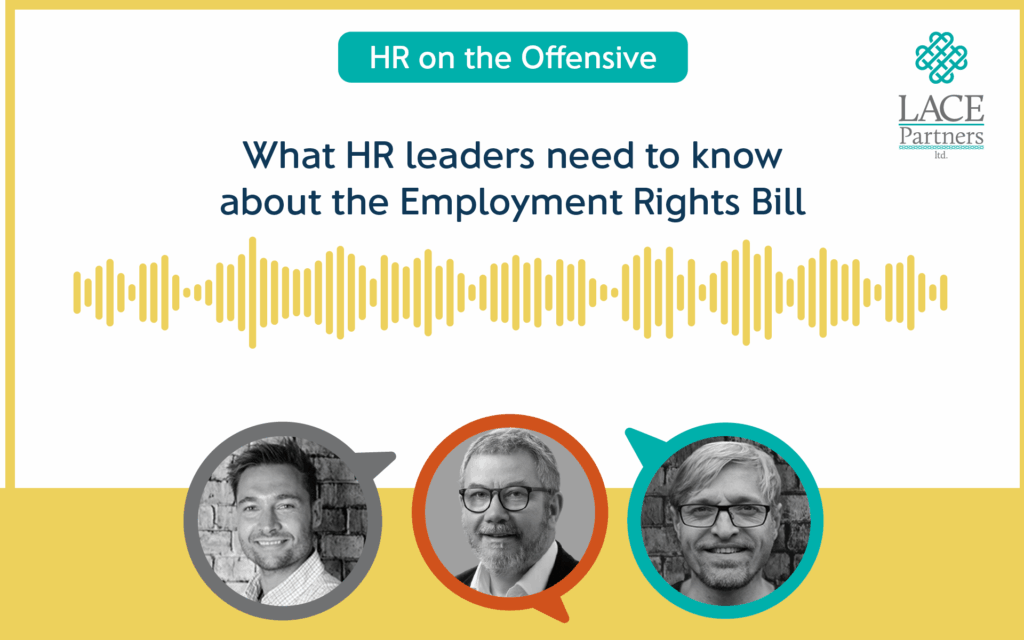This week’s blog from Chris Horton comes following a recent meet up of our HR Shared Services and Payroll communities, a half day event featuring panels, roundtables and great discussion. Read on for insights from our two panels. Learn more about our communities here. Payroll foundations not your thing? Jump to the second panel on HRSS and Payroll innovations here.
Laying the groundwork: The core pillars of Payroll
Panel discussion based on our recent whitepaper with: Simon Puryer, Payroll Executive Director at LACE Partners, Tom Croughton, Director at JGA Recruitment, Melanie Pizzey, CEO of the Global Payroll Alliance, and Nick Prangnell, SVP Global Business Services at Smith + Nephew.
For many, it’s a simple transaction – money in, money out. But for those of us in the trenches, we know it’s a finely tuned machine, a complex web of regulations, technology, and, most importantly, people.
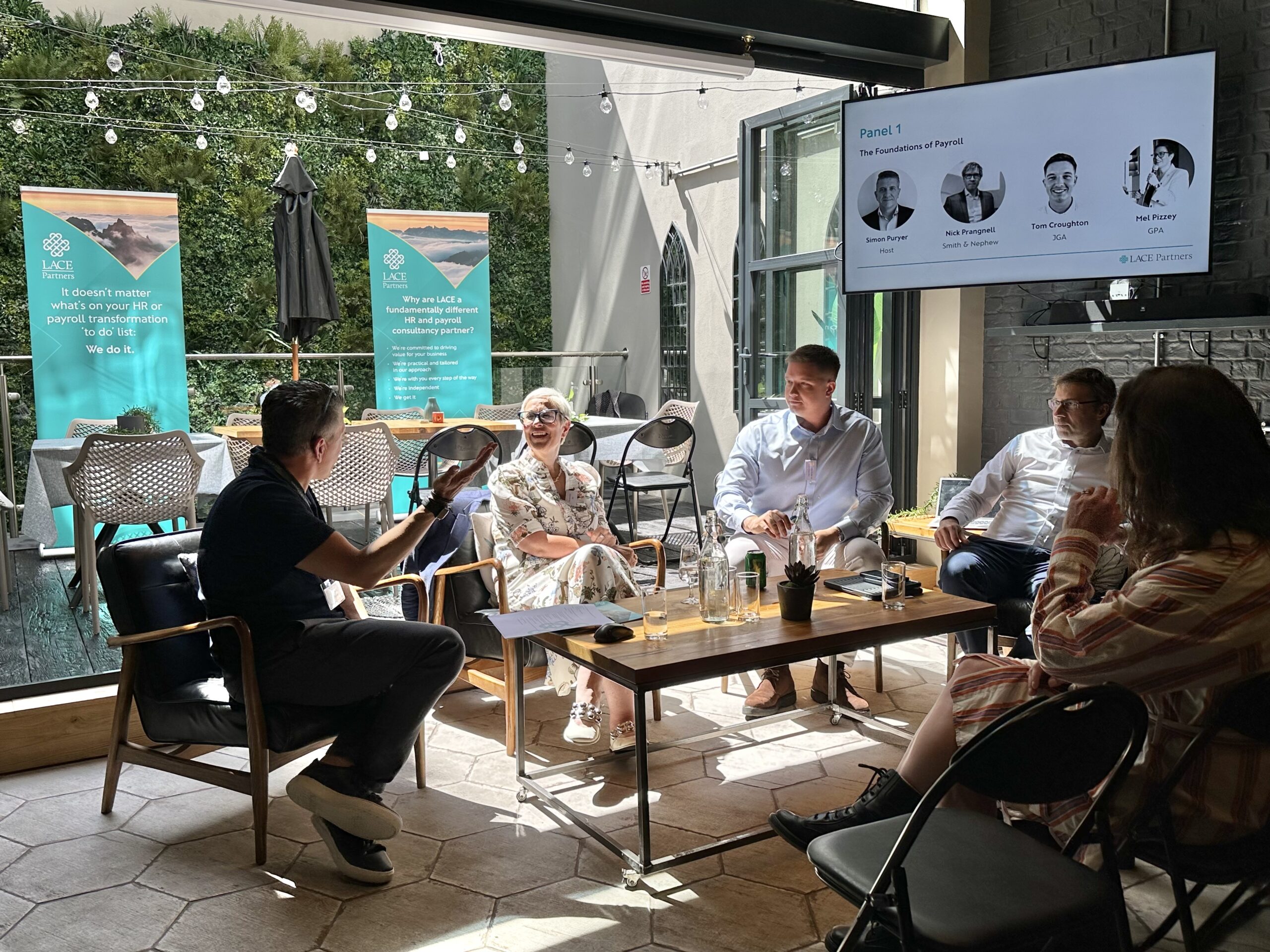
Simon Puryer set the stage of our second combined community event by outlining the fundamental pillars of payroll, including operating model, technology, and processes. These three elements form the bedrock upon which any successful payroll function is built and are three of the seven that we have previously identified in our Optimal payroll starts with the foundations whitepaper that was launched a couple of month’s back. Nick Prangnell, speaking from his experience at Smith & Nephew – a global medical technology company operating in 30 countries – elaborated on the crucial role of the operating model.
For a company like Smith + Nephew, with its global footprint, the Payroll operating model is important. Nick highlighted their use of Workday alongside a blend of insourced and outsourced payroll vendors. His key takeaway? It’s absolutely okay to be a “control freak” when it comes to payroll. Defined processes and clear service levels are non-negotiable.
Tom Croughton, director of JGA Recruitment, underscored another foundational element: getting the right people involved. He emphasised the fundamental challenge and opportunity in attracting and engaging skilled payroll professionals. It’s a specialised field, and the talent pool needs constant nurturing.
Melanie Pizzey, drawing on the collective wisdom of the Global Payroll Alliance’s members, offered a unique perspective on vendor experiences. Payroll is a highly complex area, and navigating the landscape of diverse vendors can be challenging. Mel’s advice was clear: go beyond the sales pitch. Engage in detailed conversations with the actual people you’ll be working with, not just the sales team. And crucially, tap into the rich knowledge base of the payroll community – learn from others’ experiences, both good and bad.
AI in Payroll: Hype vs. reality
The conversation inevitably turned to the hot topic of Artificial Intelligence (AI). Is AI transforming payroll as we know it?
Melanie Pizzey offered a refreshingly grounded, even slightly cynical, perspective. Based on the experiences of her community members, tangible results from AI in payroll are still largely elusive. The hype, she suggested, is often premature. Payroll professionals are not facing imminent job displacement; AI fatigue, on the other hand, is a real phenomenon. While AI might assist in areas like fraud detection (as Monica Miller from Compass highlighted regarding sickness and fraud), a wholesale revolution isn’t on the immediate horizon.
Nick Prangnell, however, offered a slightly more optimistic view from Smith + Nephew’s perspective. He saw potential for automation in specific areas of payroll like compliance and audit activities, suggesting that targeted AI applications could indeed bring efficiencies.
Global Payroll: No magic bullet
The perennial question of a “recommended global payroll vendor” received a resounding answer: there’s no magic solution.
The best approach is highly context-dependent. Nick Prangnell suggested a strategy of managing payroll regionally and insourcing where it makes strategic sense. He also offered a crucial piece of advice: if you outsource, thoroughly vet your vendors and understand if they are further subcontracting in other countries. This level of due diligence is essential for maintaining control and oversight.
The evolving Payroll professional: Skills for the future
The discussion then shifted to the evolving skillset required for payroll professionals. Melanie Pizzey noted a trend of payroll teams “getting back to basics,” ensuring their members deeply understand calculations, rules, and how to apply fixes. This fundamental knowledge remains critical.
However, the consensus was that a broad skillset is increasingly necessary. Beyond the core payroll expertise, professionals need:
- Technology understanding: A grasp of the various payroll systems and how they integrate.
- AI uses and application: While not necessarily building AI, understanding its potential applications and limitations in payroll.
- Big doses of empathy: Recognising the human element behind every payslip and providing compassionate support.
Nick Prangnell highlighted Smith + Nephew’s focus on global standardised processes and continuous improvement. This necessitates not only payroll subject matter experts (SMEs) but also skilled process and project management professionals. The distinction was drawn between simply “pushing the button” on a payroll system and possessing the deep knowledge of “how it all works” – the latter being the hallmark of true excellence in payroll.
In conclusion, the world of payroll is dynamic and challenging, yet incredibly rewarding. It demands a holistic approach, encompassing robust operating models, smart technology choices, refined processes, and, critically, a skilled and empathetic workforce. As these experts demonstrated, excellence in payroll goes far beyond simply issuing a payslip; it’s about strategic value, meticulous control, and a commitment to continuous improvement in an increasingly complex global landscape.
Navigating the next frontier: Innovation and optimisation in HRSS and Payroll
Panel discussion featuring industry leaders: Dawn Goodall, HRSS Lead for LACE Partners, Clare Phillips, Global Head of HR Services and AI HR Champion at IFS, Mike Serbrock, Head of Change and Senior programme manager at Lloyds Banking Group (LBG), and Martin Colyer, Innovation and AI Strategy Director at LACE Partners.
The world of HR Shared Services (HRSS) and Payroll is constant motion: “the status quo is not an option.” Our panel delved into the practicalities of optimising processes, technology, and operating models, and critically, how artificial intelligence (AI) can serve as a powerful enabler.
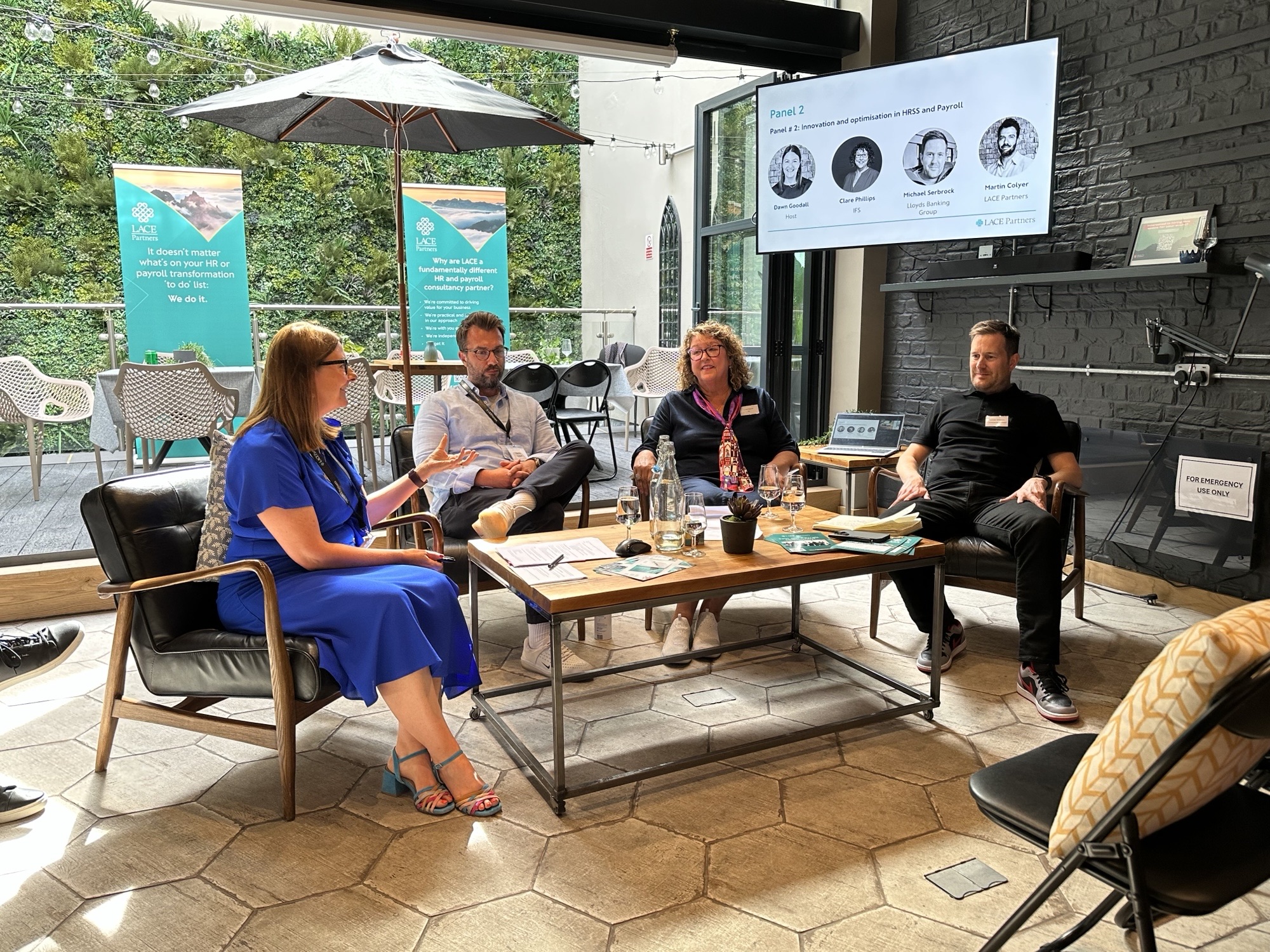
Building global HR excellence: The IFS journey
Clare Phillips, Global Head of HR Services at IFS, a company known for leveraging AI to run its processes and assets, shared invaluable insights from their journey. With approximately 7,000 employees across 30 countries, IFS has embarked on a significant HR transformation. Their strategy involves centralising and globalising HR, with a substantial offshore presence in Sri Lanka and regional hubs adopting a “follow the sun” model. This operating model, which has been in place for two and a half years, demonstrates deep ownership of HR business processes, covering the entire employee lifecycle.
A key takeaway from IFS’s experience is the commitment to upskilling their Sri Lankan team – a significant investment of time and effort. Interestingly, no formal business case was required to establish their offshore HR presence, underscoring the clear strategic imperative. The results speak for themselves: a remarkable 24-hour SLA and 98% data efficiency.
However, the journey wasn’t without its challenges. Adoption was a key hurdle, particularly in moving support and processes from in-country to the global hub. Clare highlighted that this was a “detail-driven” process that required building confidence and trust over time. They adopted a systematic approach, working country by country and region by region to bring teams on board, ensuring that processes were clearly understood and efficiently handled. This meticulous approach underscored a fundamental principle: innovation and curiosity are crucial, but they must be grounded in robust execution.
LBG’s Payroll transformation: A case study in precision
Mike Serbrock from Lloyds Banking Group (LBG) provided a compelling case study in payroll transformation, particularly impactful given their responsibility for payroll for over 60,000 employees across the UK. While payroll is outsourced, LBG performs rigorous in-house checks and controls. Their digital transformation journey, driven by a laser focus on accuracy and efficiency, led to the selection of a new Payroll system provider 2023, which was subsequently implemented in February 2025.
One of LBG’s primary objectives was to consolidate six disparate payrolls into one streamlined system, addressing a multitude of manual processes through automation. Mike emphasised the critical importance of dedicated project roles: this was not a “side of desk activity.” Strong executive sponsorship from the CPO and Finance was instrumental in securing the necessary resources and commitment.
A crucial learning from LBG’s experience was the extensive time spent deeply understanding all existing processes before designing the be “To Be” processes in line with the new system functionality. Testing, Mike reiterated, is absolutely critical with LBG undertaking two parallel payroll testing cycles to provide assurance payroll output was correct. They established clear tolerance levels demonstrating a meticulous approach to accuracy.
Strong HyperCare and robust post-go-live support were also central to their success. As part of their wider transformation, LBG created a single employee engagement layer using AI technology that employed a virtual agent for handling low complexity payroll queries with automated routing to an outsourced provider for more complex case support.
Practical use cases for AI
The discussion then naturally moved to the role of AI. For LBG, AI contributes to data quality, simplifying and verifying information, and streamlining processes for incremental gains and efficiency. They have adopted an MVP (Minimum Viable Product) approach, rolling out AI solutions division by division. LBG’s rigorous testing includes engineers, HR business partners, and HR specialists, with a strong feedback loop. They even enlisted outside agency help to build their Large Language Models (LLMs) and provided extensive training around prompting.
Clare from IFS reinforced a key principle for AI adoption: standardise before you automate. Her team actively fosters a culture of curiosity and tech-savviness, forming project “think tanks” and providing AI training at general, intermediary, and advanced levels.
For Mike at LBG, operating in a heavily regulated environment, SOCs controls and real specialisation in payroll are paramount. Both speakers highlighted the importance of strong self-service capabilities and, crucially, the human element of employee experience. Testing not just for “not breaking” but for the user experience, particularly for their top 100 leaders using the system, was a key focus.
The pace of change in AI is rapid, with the half-life of an AI tool estimated to be just six to nine months. This underscores the need for continuous learning and adaptation within HRSS and payroll teams.
In conclusion, the journey to innovation and optimisation in HRSS and payroll is not about radical overnight shifts, but rather a strategic, meticulous, and continuous evolution. It requires a clear understanding of operating models, a commitment to process standardisation, smart technology adoption, and a recognition of AI’s potential as an enabler, not a replacement. Most importantly, it demands a focus on the human element – building trust, empowering employees, and ensuring a seamless experience. The “status quo” truly is no longer an option and those embracing this mindset are charting the course for the future of HR and payroll excellence.
Have questions on what you’ve read? We love a chat so feel free to reach out via the form below. And if you’d like to come along to our next event, sign up to our Payroll and Shared Services communities here.











